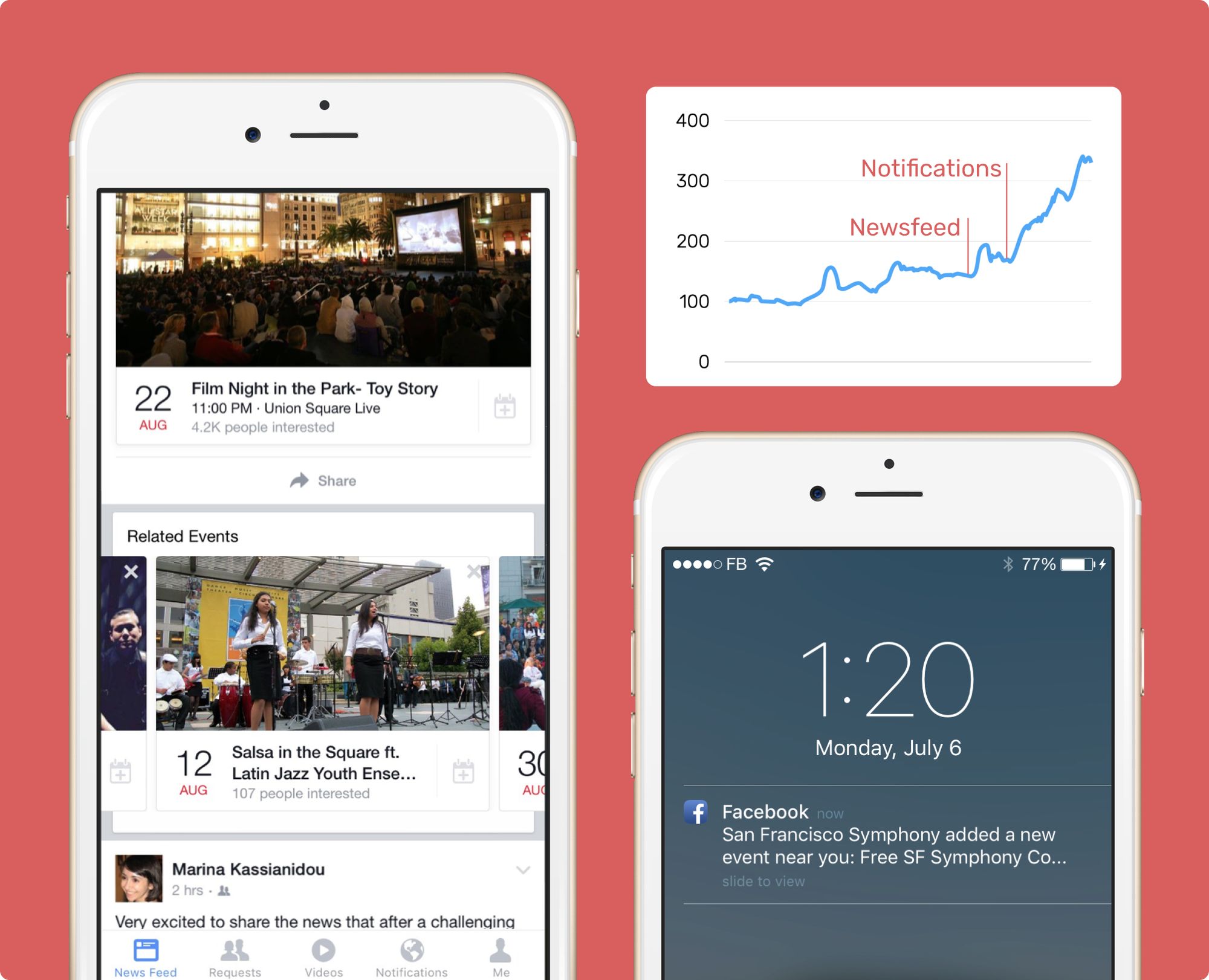In 2014, Facebook Events presented a great opportunity. It was one of the most active surfaces of the platform without substantial product and design investment.
I was a product design lead on the team, ****along with Kevin Schaefer, John Kumahara and Patrick Keenan.
During my tenure (2015→2016), we split Events to 2 products: a focused social product for personal events, and a flexible platform for public events.
The Sleeper Hit
Events was one of the unsuspected success stories on Facebook. In 2014, it captured a generous portion of Facebook's engagement metrics without significant investment beyond maintenance and cosmetic updates.
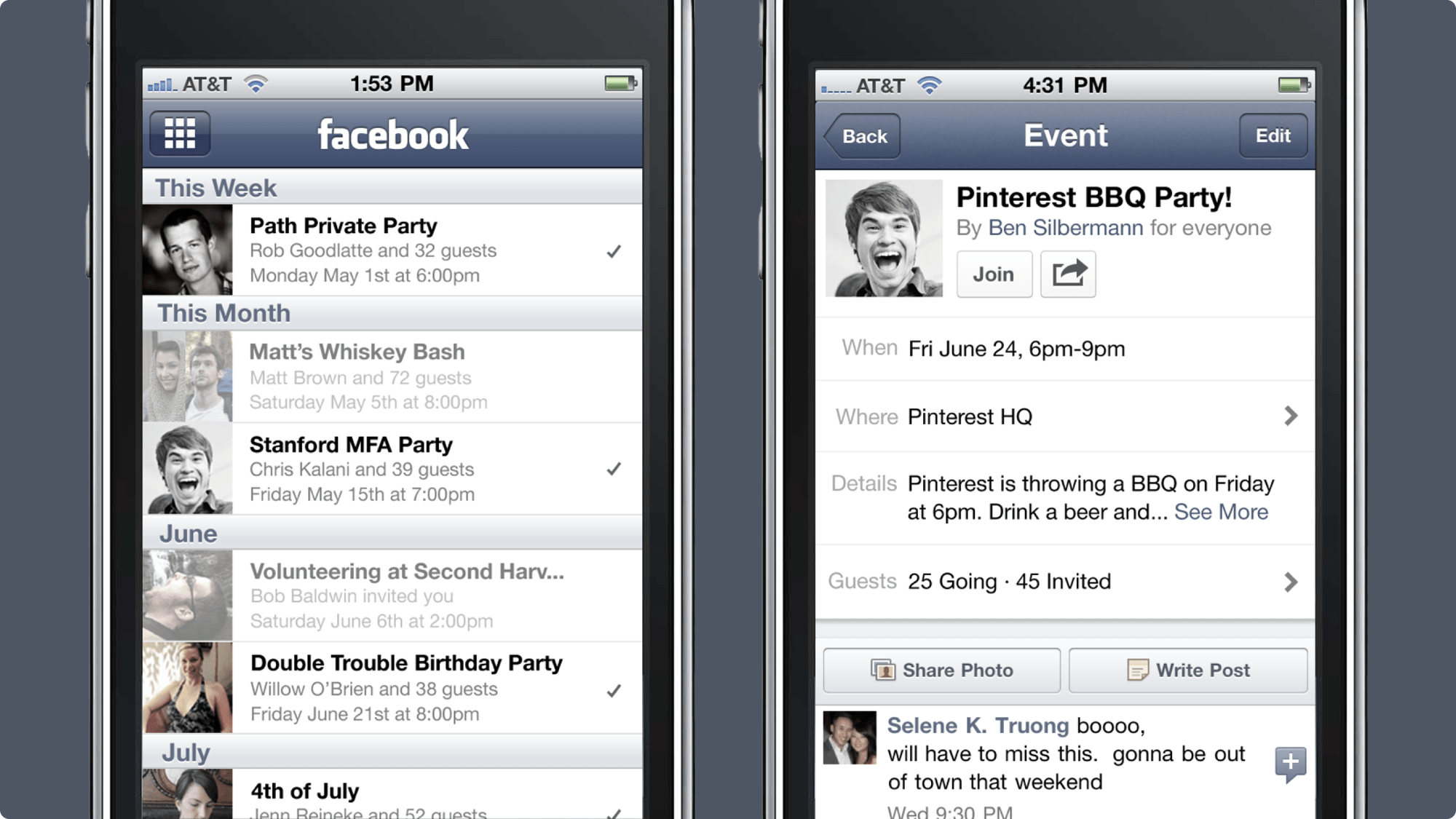
Outgrowing its Original Use Case
Over time, use cases for Events grew beyond house parties. Festivals, concerts, online events, art shows, and protests made the bulk of events and invites, effectively diluting the core use case.
An Effective Distribution Channel... to a Fault
Invitations to Facebook Events guaranteed direct communication with users on Facebook without the limits of Messenger or Newsfeed. Events were getting abused as a spam distribution mechanism and were rife with memes.
The Case for Splitting Events
Public and Private Events called for distinct content, invites, and connection models (e.g. going / not going). However, Facebook products are designed as generic platforms to aggregate as many users as possible and expose them to advertisers on Newsfeed.
The argument was won by demonstrating:
-
Distinct actors - private and public event creators did not overlap
-
Distinct use cases - private events are about personal invitations and sharing memories after the fact; public events are about promoting, engaging and selling tickets
-
Use cases that hurt each other - spam invitations were on the rise, RSVP responses were going down
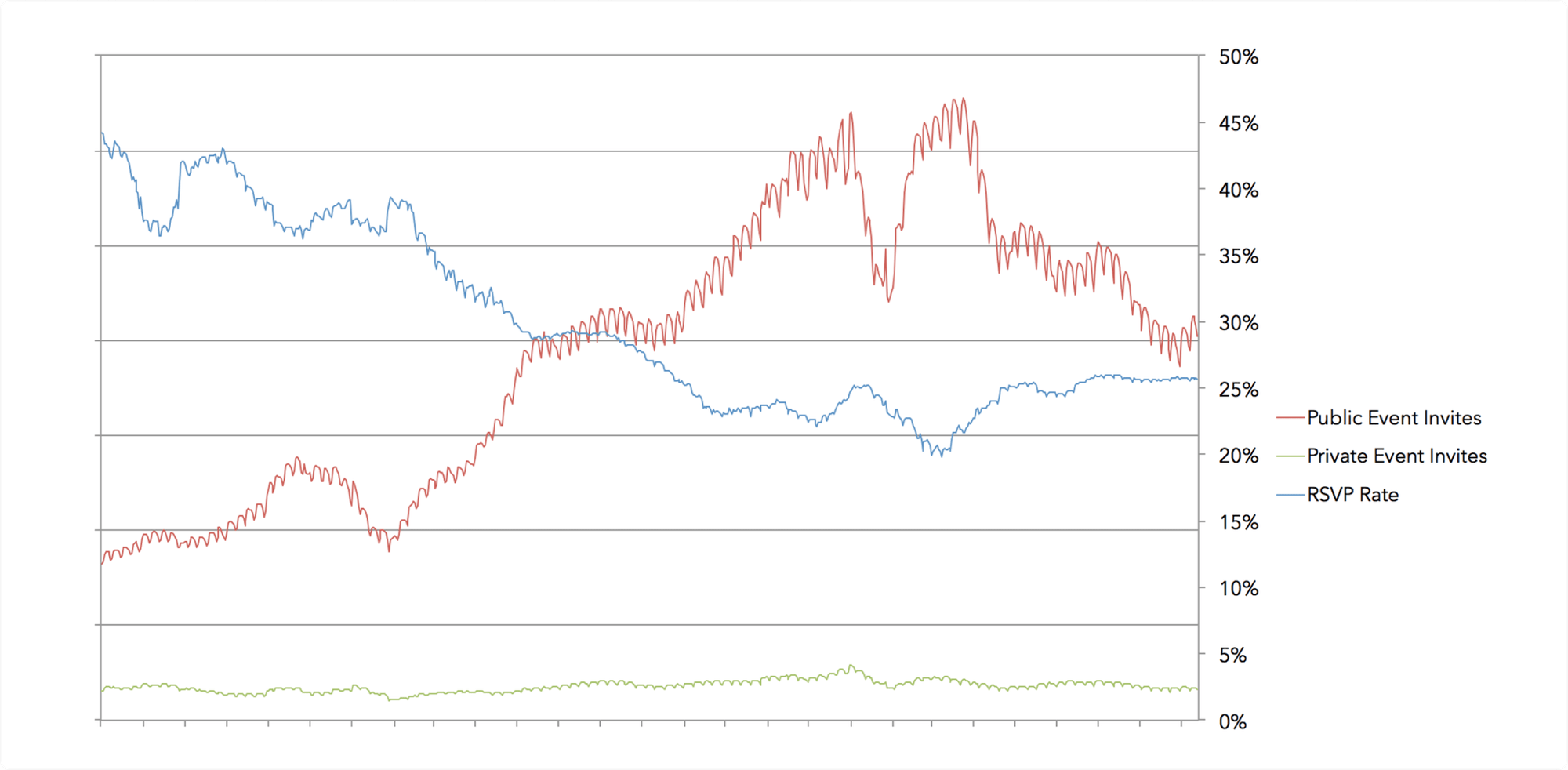
Private Events
The product was shifted towards feeling personal and private. Invite responses were updated to Going / Maybe / Can't Go (instead of Join / Leave). This lowered social pressure and increased responses to give hosts a more accurate preview of their guest list.
Personal Invites & Reminders
Deeper integration with Messenger made invitations feel like direct messages instead of an impersonal broadcast. Social notifications helped people coordinate at the right time.
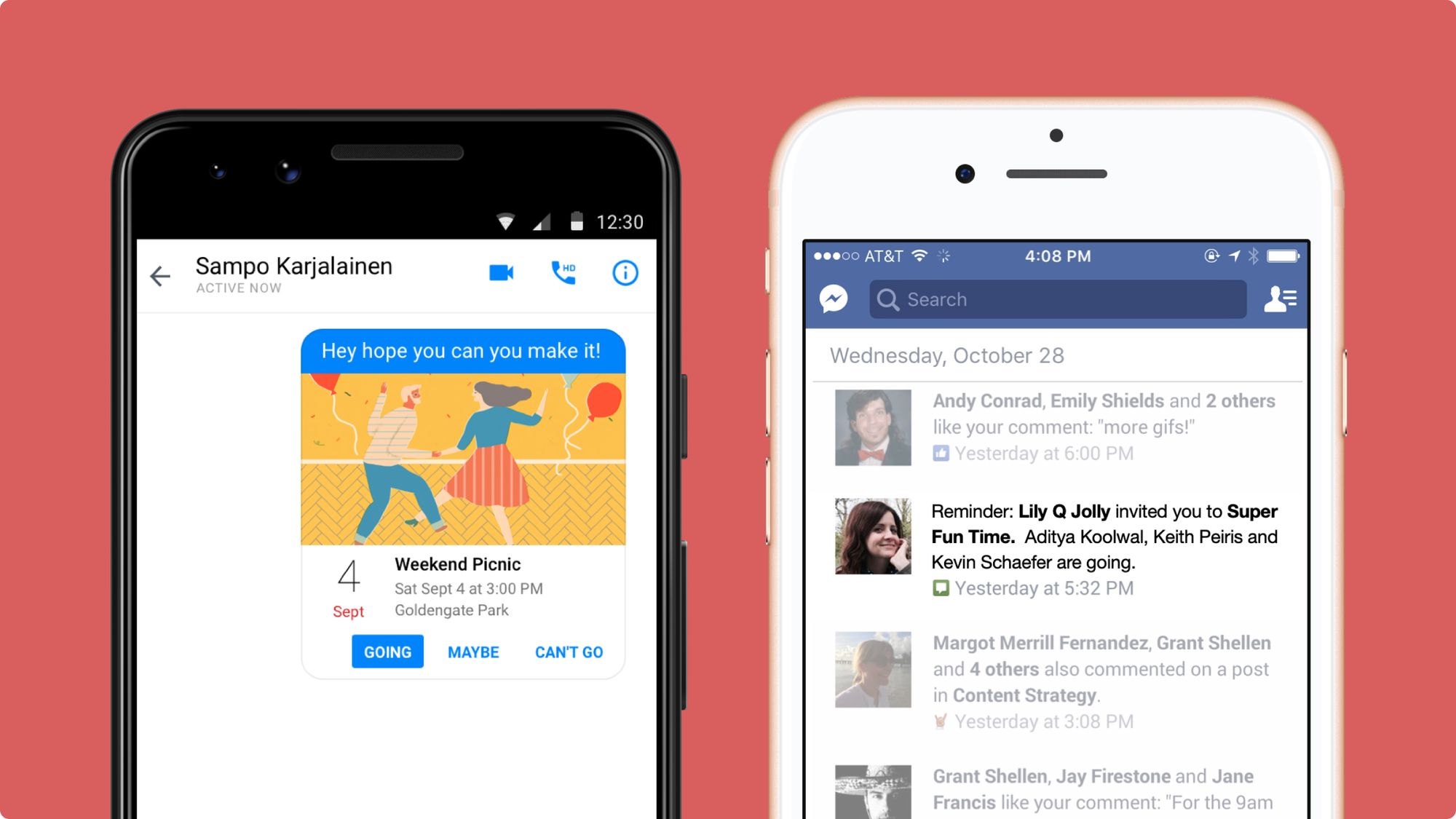
A Safe Place for Shared Memories
Restrictions were put on the visibility of private events so guests felt like they could discuss and share photos more freely.
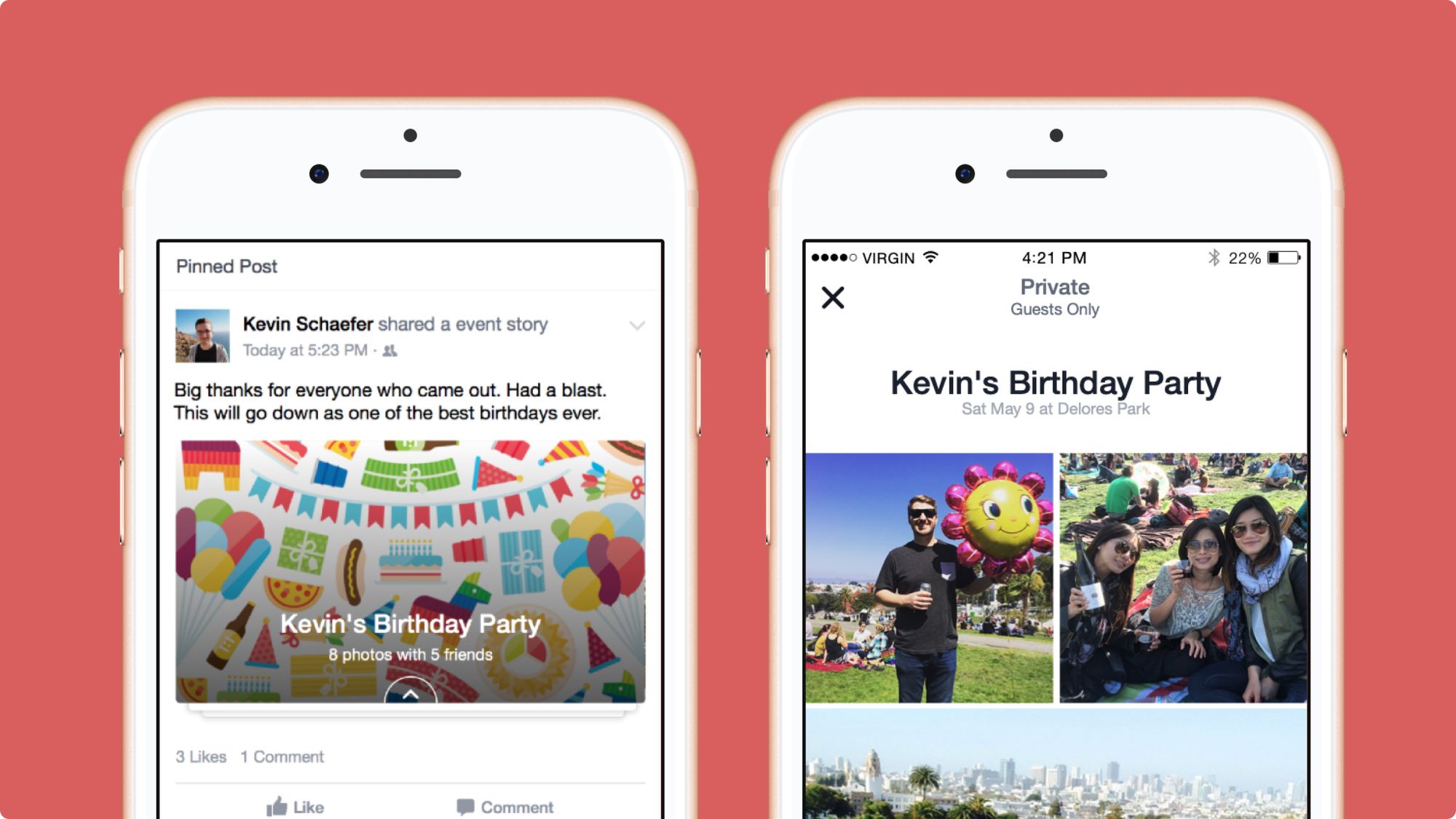
Public Events
Public events were re-created from scratch. Conversations were downplayed in favor of useful information, and tools were given to promoters to help them grow their audience.
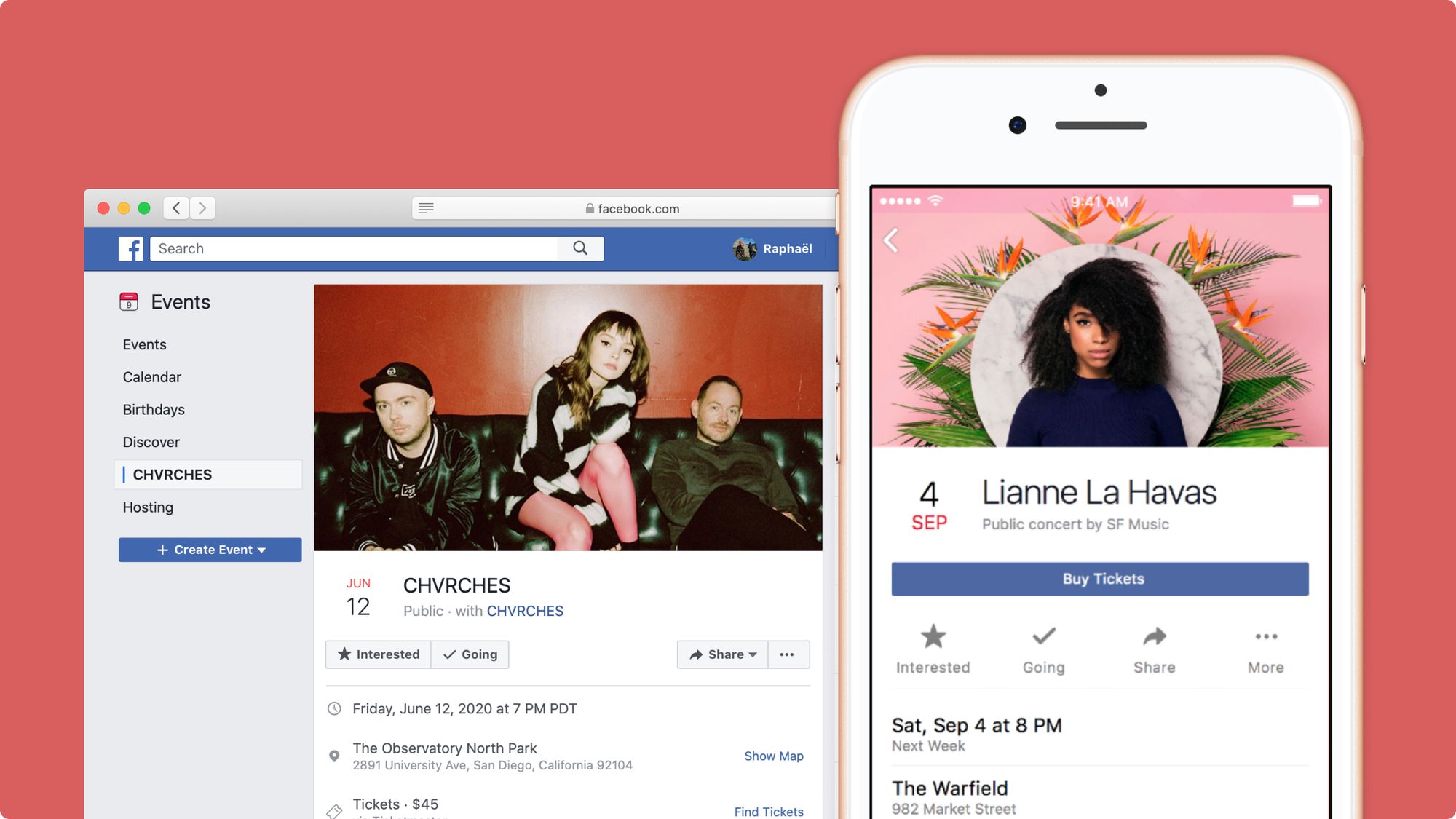
Contextual Information
To nudge people into signaling their intent to attend events, we surfaced all the pieces of information needed to make a decision. Cards were added over time to describe the venue, performers, who's going, who might be interested, etc.
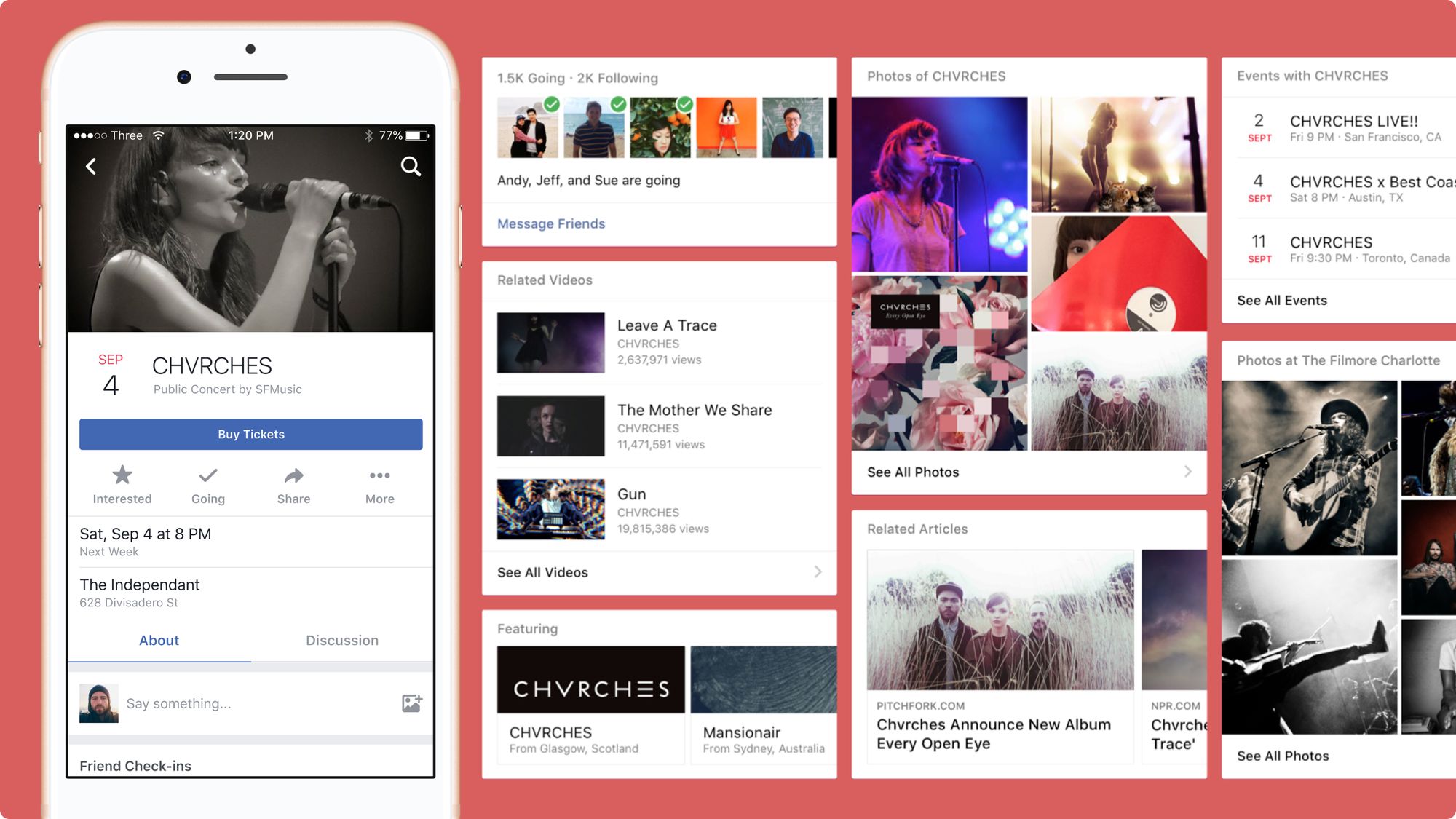
Social Discovery
By changing the connection model to going / interested, people could signal interest to their network without committing too much. Over time, this generated more relevant event recommendations and clustered friends with similar tastes.
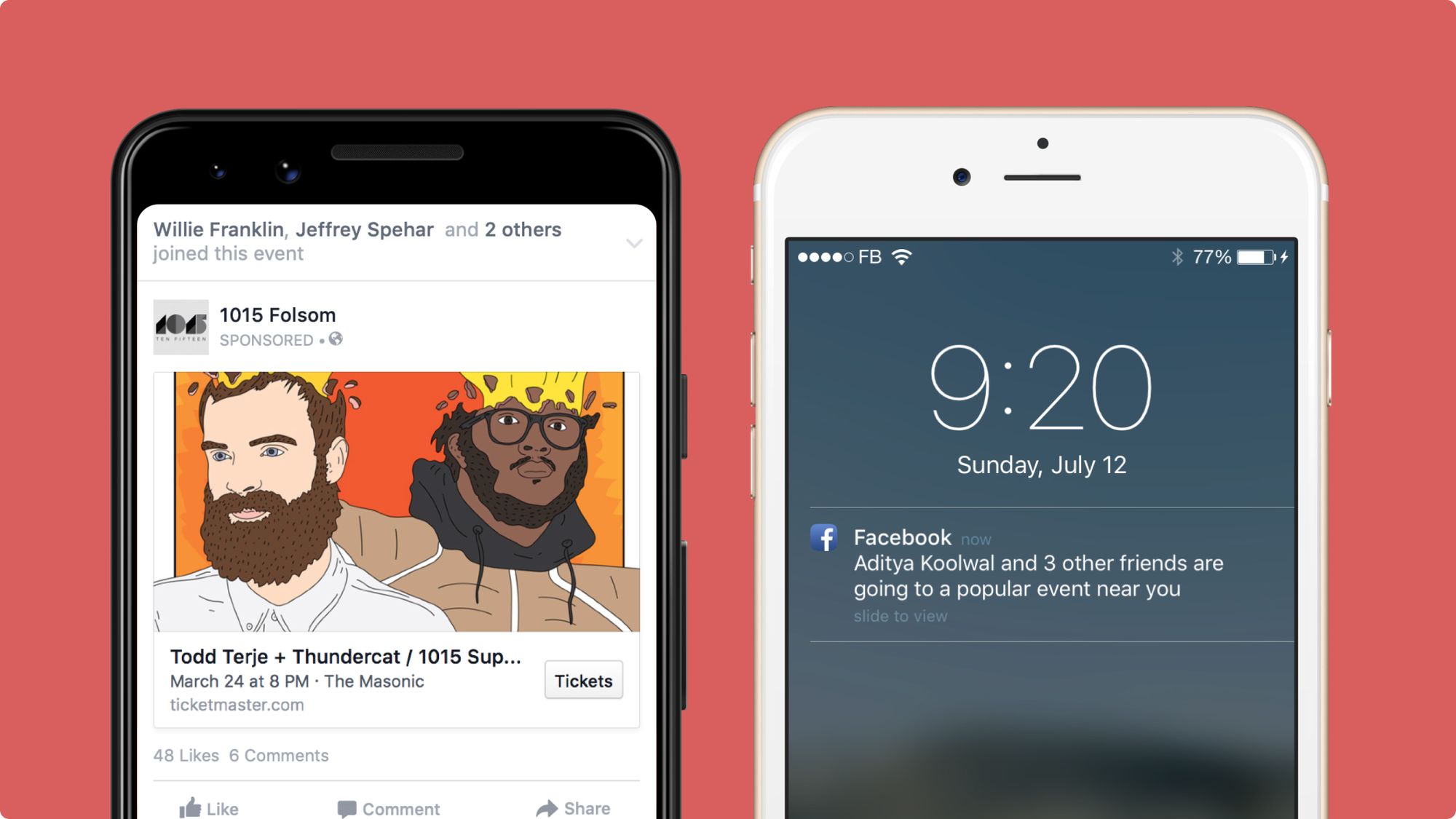
Tools for Event Creators
Giving promoters insight in their audience helped them grow and use Facebook as their primary distribution channel (and therefore ads, wink wink). We designed dashboards with engagement metrics, ticket link click-throughs, demographics, attendance projections, roles & permissions to that effect.
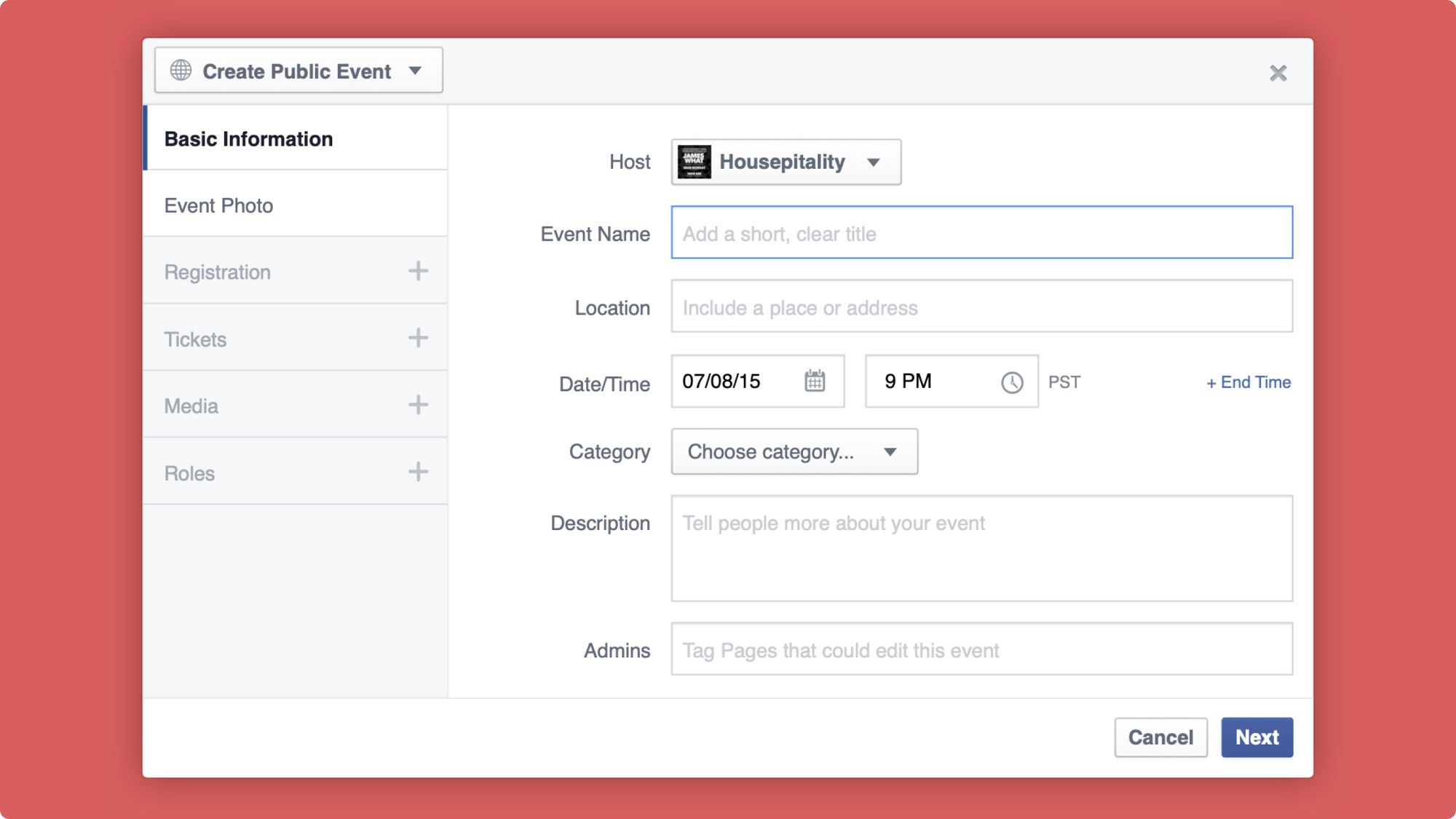
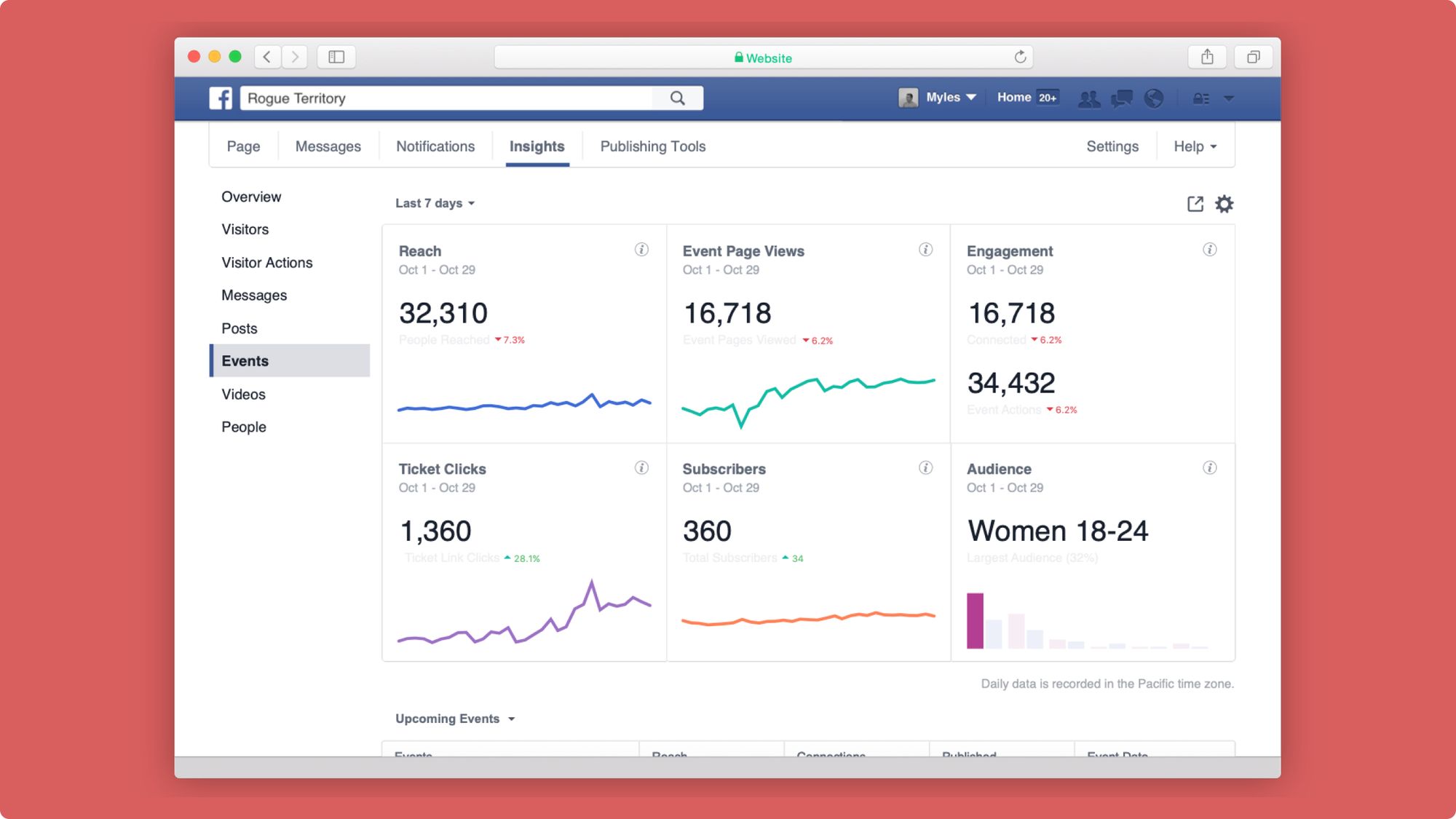
Beyond Pixels
At Scale, Nuance Matters
Updating the connection model (e.g. Going / Interested) was the smallest, yet most impactful change made for private and public Events. It reframed social expectations and stimulated engagement.

Harnessing the Beast
Facebook is perhaps the most powerful distribution network ever. Investing in the relevance and timeliness of notifications and Newsfeed stories, instead of UI, had drastic effects on user engagement and perceptions of the quality of the service.
